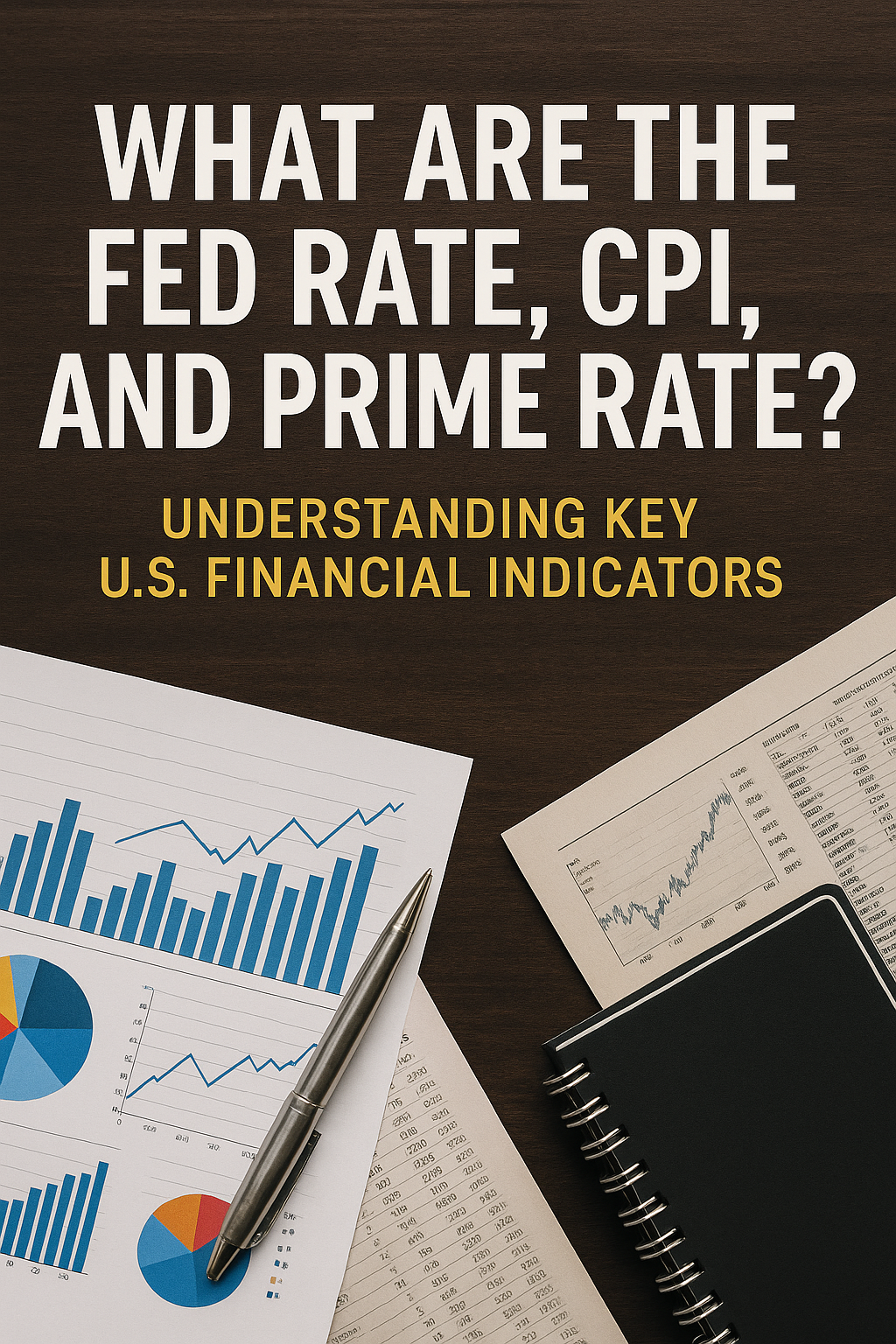If you’re trying to make smarter financial decisions in the United States, it’s important to understand the key terms and indicators that influence everything from credit card interest rates to inflation and investment returns. Three of the most important are the Federal Funds Rate (Fed Rate), Consumer Price Index (CPI), and the Prime Rate.
In this guide, we’ll break down what these terms mean, how they affect your finances, and why they matter—whether you’re budgeting, borrowing, or investing.
1. What Is the Federal Funds Rate (Fed Rate)?
The Federal Funds Rate is the interest rate at which banks lend money to each other overnight. It’s set by the Federal Reserve (the central bank of the U.S.) and serves as the benchmark for interest rates throughout the economy.
Why it matters:
- Influences mortgage rates, credit card APRs, auto loans, and savings account returns
- Affects how much consumers and businesses borrow or save
- Controls economic growth and inflation
In practice:
- When the Fed raises the rate: Borrowing becomes more expensive; this slows down spending and helps reduce inflation.
- When the Fed lowers the rate: Borrowing becomes cheaper, encouraging spending and investment to stimulate the economy.
Recent context:
During inflationary periods (like in 2022–2023), the Fed raised rates to curb rising prices. In contrast, during the COVID-19 pandemic, the Fed slashed rates to near zero to support economic activity.
2. What Is the Consumer Price Index (CPI)?
The Consumer Price Index (CPI) measures the average change over time in the prices paid by consumers for goods and services—essentially, the U.S. inflation rate.
It’s calculated monthly by the Bureau of Labor Statistics (BLS) and includes things like:
- Housing
- Food
- Transportation
- Medical care
- Apparel
Why it matters:
- Tells us how quickly the cost of living is rising
- Helps the Fed decide whether to raise or lower interest rates
- Impacts wages, Social Security payments, and investment returns
CPI in your life:
- If inflation is high, your dollars buy less.
- If your savings or investments grow slower than inflation, you’re losing purchasing power.
3. What Is the Prime Rate?
The Prime Rate is the interest rate that commercial banks charge their most creditworthy customers—typically large corporations. It’s based on the Federal Funds Rate plus a margin (usually about 3%).
Why it matters:
- Used to set rates for credit cards, home equity lines of credit (HELOCs), personal loans, and some auto loans
- Changes in the Prime Rate usually happen shortly after the Fed adjusts its rate
Example:
If the Fed rate is 5.25%, the Prime Rate might be 8.25%.
If your credit card APR is listed as “Prime + 15%,” and the Prime Rate rises, so does your credit card interest.
How These Indicators Work Together
These three rates are interconnected, and together they shape the financial landscape in the U.S.:
| Indicator | Type | Who It Affects |
|---|---|---|
| Fed Funds Rate | Monetary policy tool | Banks, mortgage rates, economy |
| CPI | Inflation measurement | All consumers and savers |
| Prime Rate | Consumer borrowing rate | Credit cards, loans, small businesses |
Real-Life Example
Let’s say the CPI is rising rapidly, showing 6% year-over-year inflation. In response, the Federal Reserve increases the Fed Rate by 0.75%. Shortly after, banks raise the Prime Rate, causing:
- Credit card APRs to increase
- Mortgage rates to climb
- Savings account yields to improve slightly
- Borrowing becomes more expensive, so spending slows
This helps cool down inflation—but it also affects your budget, loan decisions, and investment strategy.
How These Rates Affect Your Personal Finances
- Borrowers: Higher Fed and Prime Rates = more expensive loans
- Savers: Higher Fed Rate = better high-yield savings and CD rates
- Investors: Inflation (CPI) impacts real returns—monitor whether your portfolio beats inflation
- Retirees: Fixed incomes lose buying power when inflation rises quickly
Final Thoughts: Know the Numbers Behind Your Money
Understanding the Fed Rate, CPI, and Prime Rate empowers you to make smarter financial decisions.
Whether you’re choosing a loan, investing for retirement, or just trying to protect your purchasing power, these indicators affect how far your money goes and how fast it grows.
By staying informed, you take control—and that’s the key to financial independence.
